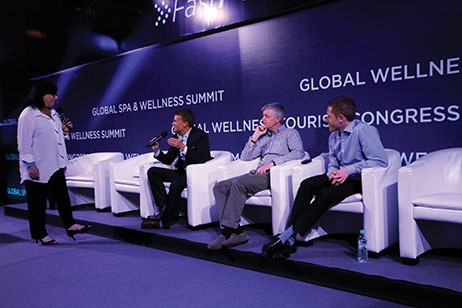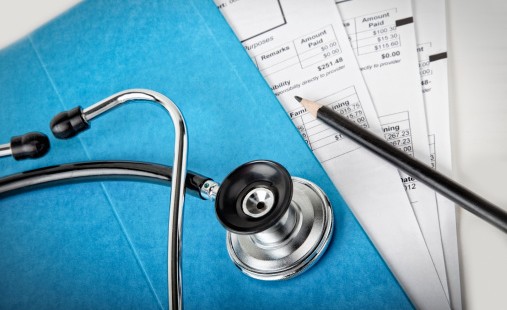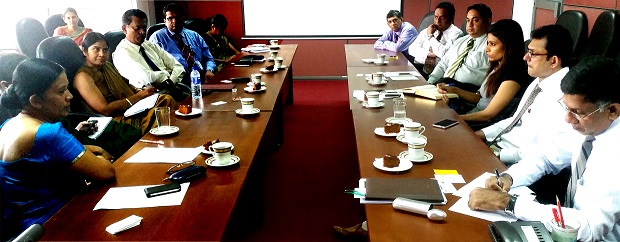Dubai :
Most tourists flock to Dubai for its man-made islands and the world’s tallest building. But Marina Ivanova went to the desert city for liposuction.
The Moscow resident had looked for a place that would suit both her medical and vacation needs. While access to top-notch surgeons was key, just as important were the golf courses and spa centers during her monthlong getaway.
“I had always wanted to come spend some time in Dubai, so I thought, ‘Why not combine the trip?’” said Ivanova, who works in the logistics department of a glass manufacturing company. “I heard that cosmetic surgeries here are quite well-known.”
Already one of world’s 10 most visited cities, Dubai is counting on more people like Ivanova to mix their holidays with high-end treatments for a luxurious form of medical tourism, rivaling Thailand and India. Now, it’s trying to attract 500,000 such visitors, adding 2.6 billion dirhams ($708 million) to its economy by 2020, according to a Dubai Health Authority plan announced this year.
Clinics like the American Academy of Cosmetic Surgery Hospital are helping. The marble-floored lobby is adorned with sculptures of Greek gods and gold-enameled vases. Saudis sit beside Europeans on a purple velvet couch under a matching chandelier as they wait for nose jobs or breast implants. A private elevator carries celebrities and Arab royalty to a VIP suite as Rolls Royces and Ferraris line the parking lot outside.
For centuries, people have traveled to hot springs and seaside resorts in search of better health. In the 1990s and early 2000s, as rising global trade and tourism converged with the ballooning costs for medical care in developed countries, emerging markets such as India and Thailand set out to recruit patients by providing cheaper care at internationally accredited hospitals.
Among the challenges Dubai may face as it seeks to capture a share of an industry worth more than $30 billion, is that it’s too expensive to compete on cost with destinations like India, and isn’t highly regarded enough to compete on quality with the U.S. and Europe, according to Josef Woodman, chief executive officer of Patients Beyond Borders, which publishes books on medical tourism. What the desert city does have is a reputation for luxury, and it’s using that to carve out a niche in the medical tourism market.
Lacking the oil and gas of neighboring Abu Dhabi, Dubai racked up $129 billion of debt transforming itself into a tourist destination and the Middle East base for banks such as HSBC Holdings Plc and Deutsche Bank AG.
“Tourists already come to Dubai for shopping, sight-seeing and luxury,” said Raja Easa al Gurg, deputy chairperson of the board of directors at Dubai Healthcare City, a sprawling 4 million square-foot health care zone that’s home to two hospitals, and 120 outpatient medical centers and diagnostic laboratories. “We need to scale up our health care industry anyway, as millions of people flood our city and Dubai becomes a major financial hub.”
Such efforts over the past decade have met setbacks and disappointments. The transformation of the local medical system came to a halt in 2009 after Abu Dhabi was forced to bail out its neighbor to prevent a default. When the debt crisis froze investments, Harvard University and the Mayo Clinic, who had been brought in to help upgrade Dubai’s medical system, quietly packed up and left the health care zone.
In 2011, Princess Haya Bint al-Hussein, one of Dubai Sheikh Mohammed bin Rashid al-Maktoum’s wives, was appointed to restructure the hub. She hired a new CEO and a new strategy was laid out, including a renewed effort to boost medical tourism, with a focus on elective surgeries such as aesthetic procedures. The approach spurned what had been an emphasis on real-estate leases and instead focused on establishing centers of excellence in areas such as cardiology and oncology.
“It started as a real estate venture,” Woodman said. “Building came up and there were lease agreements. What they didn’t have was a training infrastructure for doctors. Expertise just doesn’t spring up out of the desert. It takes generations.”
The government is now focusing on branding Dubai as a health care hub through advertisements as well as partnerships with medical tourism facilitators, who will package deals for visitors, said Laila al-Jassmi, who until last year headed the Dubai Health Authority’s Health Policy and Strategy Sector.
Clinics such as the American Academy of Cosmetic Surgery Hospital have promoted their services directly to residents of eastern European and Gulf countries, the main markets Dubai is seeking to target.
“ Dubai is an 8-hour flying time from two-thirds of the world’s population and has earned a growing reputation as a leading global gateway and hub for trade, logistics and tourism,” Sheikh Ahmad bin Saeed al-Maktoum, who chairs the boards of some of Dubai’s biggest companies, said in a Dubai Healthcare City commercial aired on CNN. “Now we are focused on earning a reputation for excellence in health care.”
Dubai Healthcare City representatives say its focus on elective surgeries and a plan to build a wellness center will create a niche market. It’s still working to improve its care in areas such as oncology and cardiology to keep locals from going abroad for more complicated procedures. Demand for such services is rising with the rate of obesity among a population that craves fast food and gives short shrift to exercise.
While Dubai introduced universal health care this year, large gaps exist between state-provided health care and private care, according to Alpen Capital, an investment bank focused in the Gulf and Asia.
More than 30 percent of the emirates population still prefers going abroad for care, a legacy of a time when the health care industry was practically nonexistent.
“I know stories of patients going abroad for infertility treatment for a full year,” said David Hadley, chief executive officer at Mediclinic Middle East, Dubai’s largest private health care company with two hospitals and eight clinics. “The infertility centers are fantastic here, but there are still misperceptions.”
Dubai’s economy is recovering and growth may reach 4.7 percent this year, the fastest pace since 2007, according to Mohamed Lahouel, chief economist for the Dubai Department of Economic Development. That’s led foreign health care institutions to plant their seeds back in the UAE.
Moorfields Eye Hospital, the 209-year-old London clinic, opened its first branch in Dubai in 2006 and has plans for another branch in Abu Dhabi. The hospital, which gets as many as 15 percent of its patients from abroad, is betting that wealthy Gulf residents, who for decades have flocked to Europe and the U.S. for medical treatment, will increasingly stay in the region for medical care, said Mariano Gonzalez, managing director of the Moorfields UAE division.
source: http://www.dailystar.com.lb / The Daily Star, Lebanon / Home> News> Regional / by Daniel Wainer, Bloomberg / September 26th, 2014





